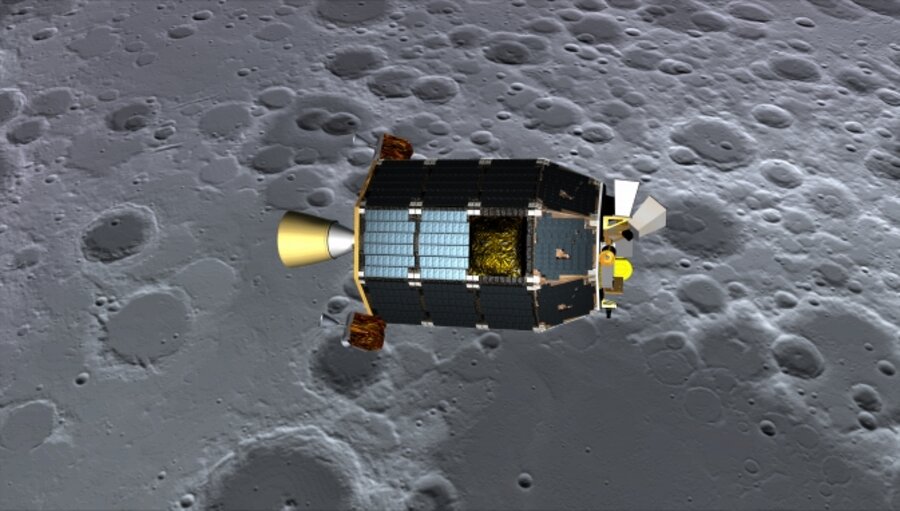NASA lunar probe: Will it unlock decades-old mystery?
Loading...
About 10 seconds before a lunar sunset or sunrise in 1972, the Apollo 17 astronauts orbiting the moon saw tall bands of lights – like thick, bright rays emanating from a sun sinking into the sea. The astronauts called that lunar light, seen on previous Surveyor and Apollo missions, “streamers,” a name that, if physically descriptive, was otherwise uninformative: No one knew what was producing the streamers.
But just before midnight on Friday Sept. 6, NASA will launch the Lunar Atmosphere and Dust Environment Explorer (LADEE) from the agency’s Wallops Flight Facility on Wallops Island, Virginia. The probe, deployed in hopes of better understanding the moon’s ultra-thin atmosphere, is also expected to answer a grand, almost mythologized question in lunar history: What was that celestial glow that Apollo 17 astronauts saw on the lunar horizon?
LADEE – about the size of a small car but about a quarter of the weight (at 800 lbs, including fuel) of a Toyota Prius – will ride into space on the back of a U.S. Air Force Minotaur V rocket, a ballistic missile that has been re-purposed as a space launch vehicle.
Once in space, the probe will settle into orbit around the moon, rather than landing on its surface. From that spot, LADEE will begin its 40-day commissioning phase that includes testing a high-data-rate laser communication system that increase the speed at which Earth can receive communications from space while also dialing down the power needed to do so.
After that phase, LADEE will begin a 100-day science phase to collect data on the composition of the lunar atmosphere. The almost negligible atmosphere could be similar to the atmospheres found swaddling planets far outside the solar system, offering scientists a new template of what to look for on planets far flung from our own, according to NASA.
In this “science phase,” NASA also hopes to sample and analyze any lunar dust found in the moon’s atmosphere. Scientists have for decades put forward dust as a possible cause for the ethereal scene that Apollo astronauts saw from their orbit around the moon, but an outstanding question is if and how that dust, wrested from lunar rock, is lofted to the atmosphere. One possibility, scientists have proposed, is that sunlight charges and electrostatically levitates dust above the moon’s pits and peeks to altitudes perhaps miles high.








